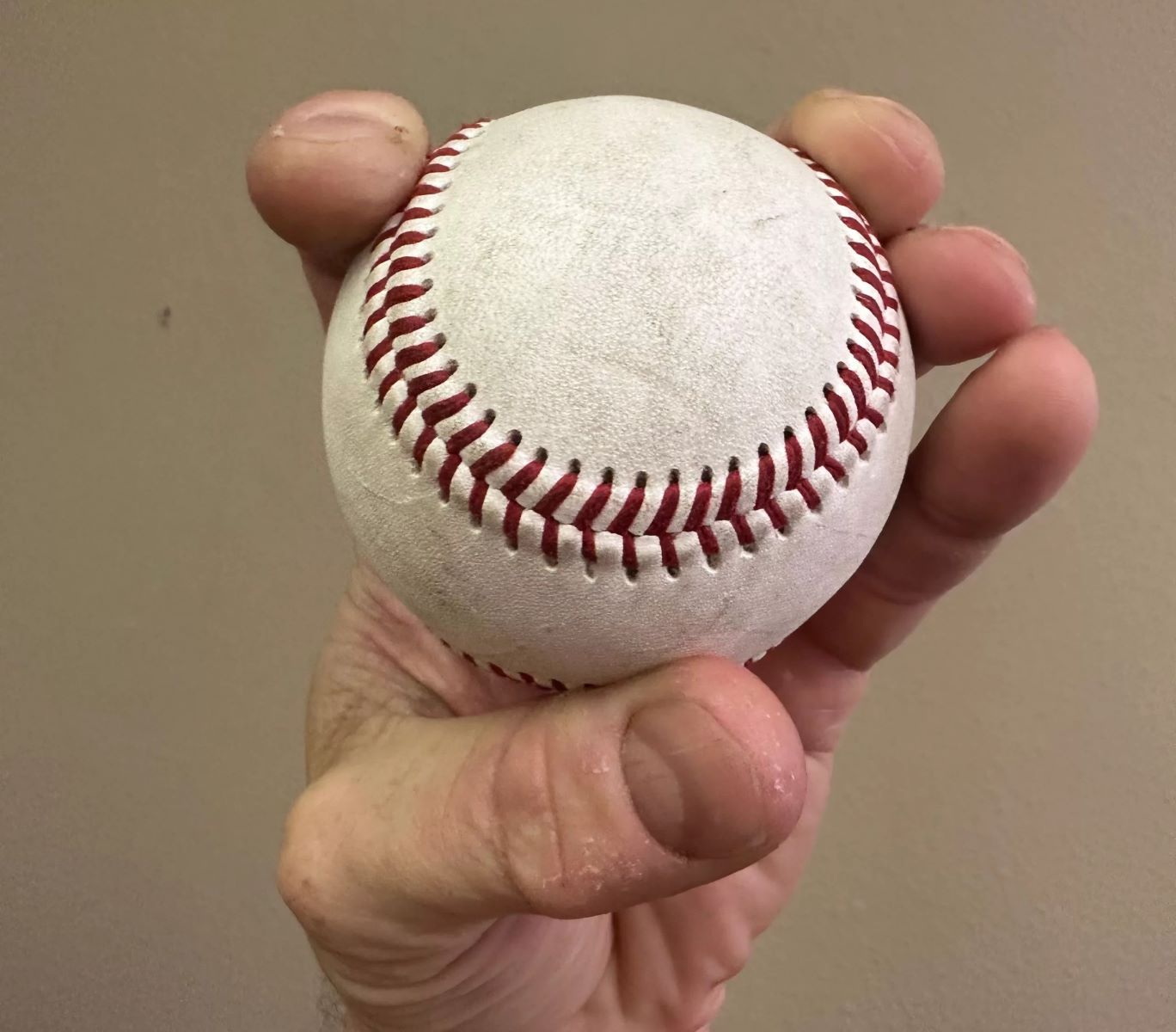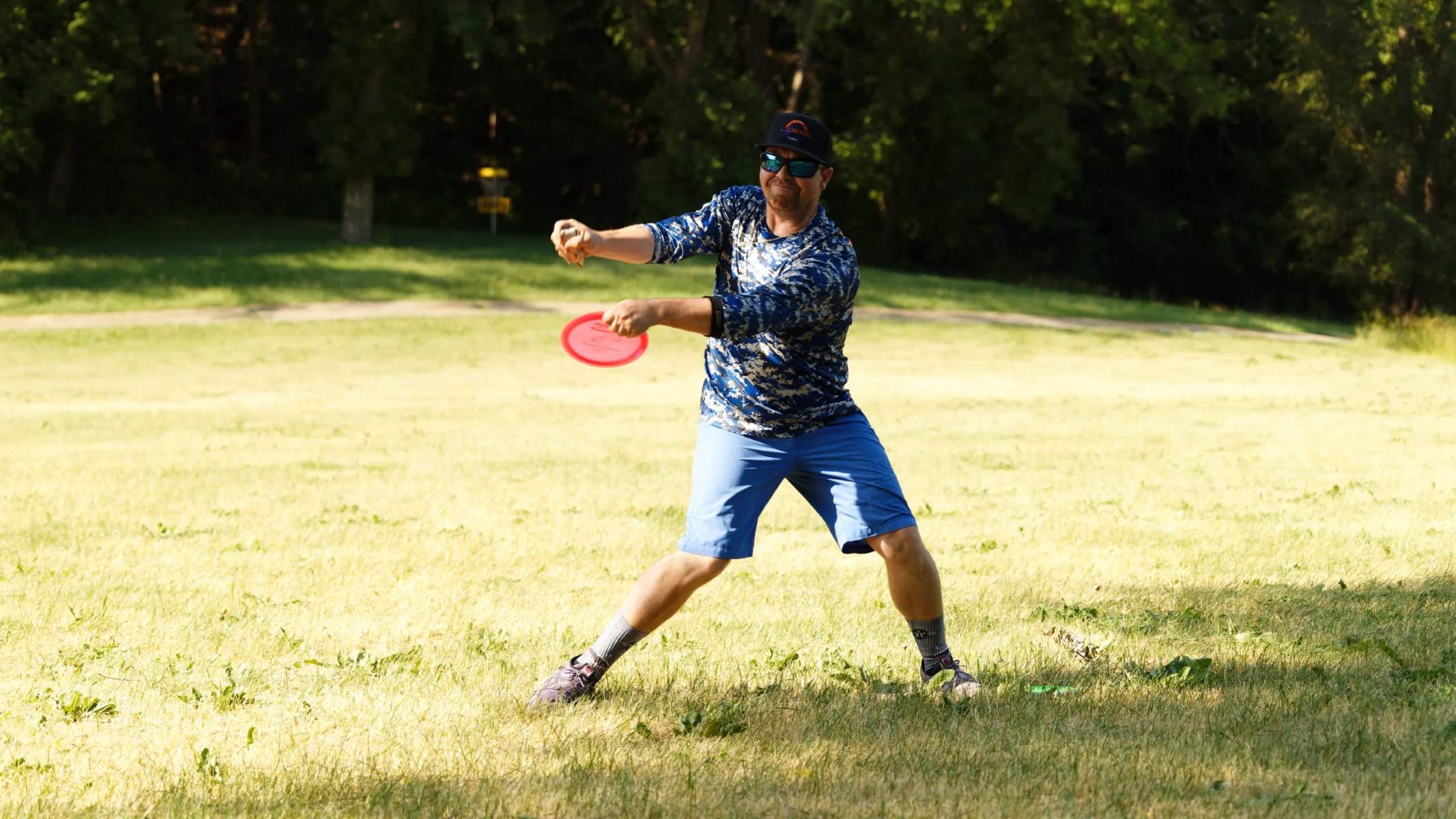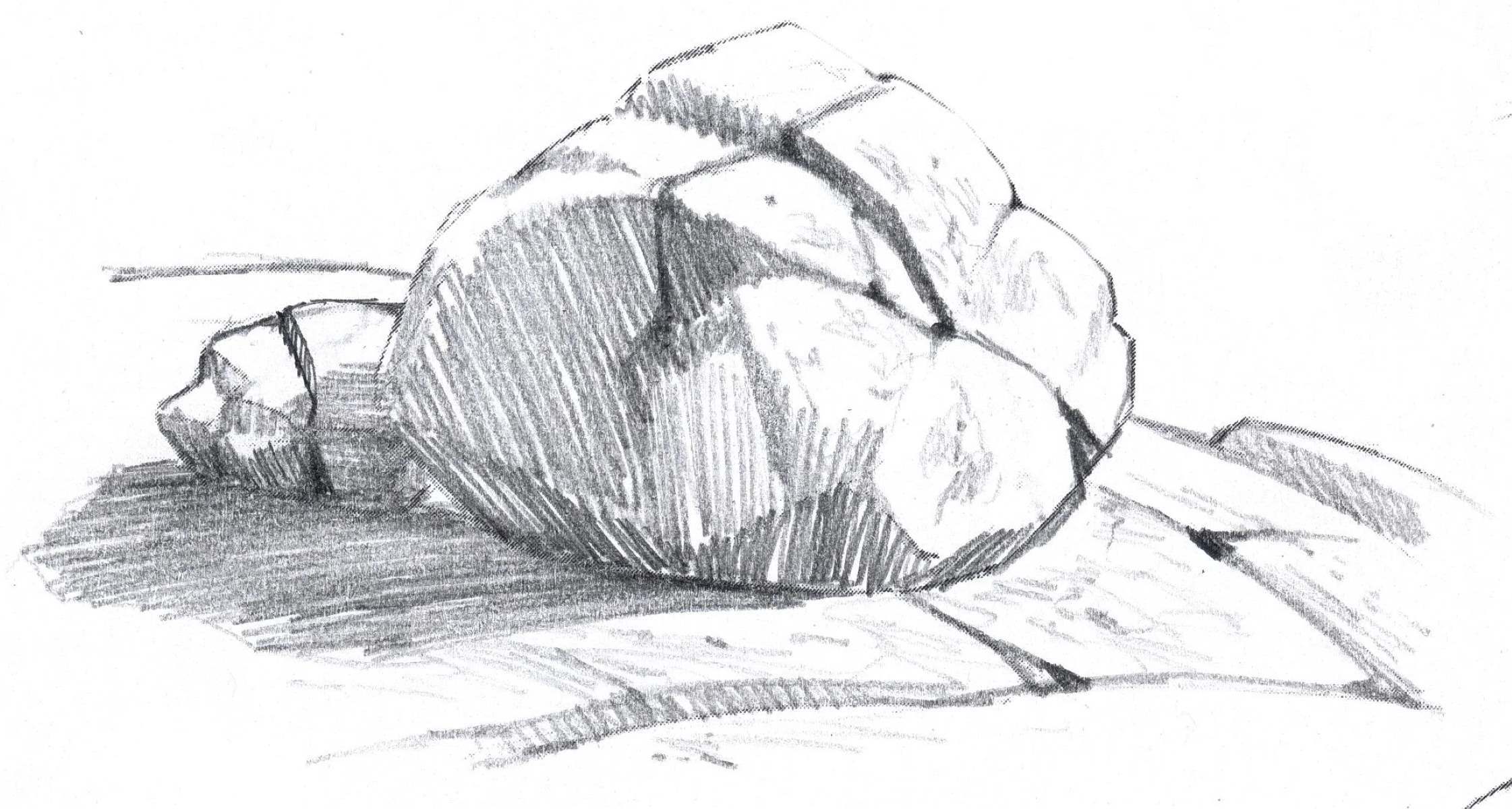

Sports
How To Throw A Changeup
Published: February 26, 2024
Learn the secrets of throwing a changeup in baseball. Improve your sports skills with our expert tips and techniques. Perfect for athletes of all levels.
(Many of the links in this article redirect to a specific reviewed product. Your purchase of these products through affiliate links helps to generate commission for Regretless.com, at no extra cost. Learn more)
Table of Contents
Introduction
The changeup is a deceptive and effective pitch in baseball, often referred to as the "great equalizer" due to its ability to disrupt a batter's timing and expectations. This off-speed pitch is a valuable tool for pitchers, as it can complement their fastball and breaking pitches, keeping hitters off balance and increasing the likelihood of inducing weak contact or strikeouts.
Mastering the art of throwing a changeup requires a combination of technique, finesse, and strategic thinking. It's not just about the grip and delivery; it's about understanding the psychology of pitching and the dynamics of the batter-pitcher duel. When executed with precision, the changeup can be a game-changing weapon on the mound.
In this comprehensive guide, we will delve into the intricacies of throwing a changeup, from understanding the grip and mastering the delivery to perfecting the movement and developing a strategic approach. Whether you're a seasoned pitcher looking to refine your skills or a newcomer eager to add a new pitch to your repertoire, this guide will equip you with the knowledge and insights needed to elevate your game.
So, grab your glove, step onto the mound, and get ready to unlock the secrets of the changeup. It's time to delve into the art and science of this mesmerizing pitch, exploring its nuances and uncovering the keys to success. Let's embark on this journey together and unravel the mysteries of the changeup, a pitch that has confounded and mesmerized batters for generations.
Read more: How To Throw A Bowling Ball
Understanding the Changeup Grip
The foundation of a successful changeup lies in the pitcher's ability to master the grip. Unlike the fastball or breaking pitches, the changeup relies on deception and differential speed rather than sheer velocity. The grip is the starting point for achieving the desired movement and speed differential that makes the changeup such a potent weapon.
One of the most popular changeup grips is the circle change, favored for its effectiveness and comfort. To execute this grip, the pitcher forms a circle with the thumb and index finger while resting the middle and ring fingers on the ball's sides. This grip allows for a relaxed hand and a loose wrist, crucial for imparting the necessary finesse and reduced velocity on the pitch.
Another widely used grip is the three-finger changeup, where the pitcher positions the middle, ring, and pinky fingers on the ball's seams. This grip offers control and stability, enabling the pitcher to manipulate the ball's movement and speed effectively. Additionally, the split-finger changeup, characterized by a wider separation between the index and middle fingers, provides a unique spin and downward movement, adding another dimension to the pitcher's repertoire.
Regardless of the specific grip chosen, the key lies in maintaining consistency and comfort. A comfortable grip allows the pitcher to execute the pitch with confidence and precision, essential for fooling batters and inducing weak contact or swings and misses.
Furthermore, the grip sets the stage for the pitcher's delivery and arm action, influencing the pitch's movement and trajectory. It's not just about holding the ball; it's about understanding how the grip interacts with the pitcher's mechanics to produce the desired effect. The grip serves as the catalyst for the pitch's transformation, turning a seemingly ordinary delivery into a mesmerizing and confounding changeup.
In essence, the changeup grip is the pitcher's canvas, the starting point for crafting a pitch that defies expectations and challenges hitters' timing. It's a delicate balance of control, finesse, and deception, where the slightest adjustment can yield significant results. As pitchers delve into the intricacies of the changeup grip, they unlock the gateway to a pitch that transcends speed and power, relying instead on subtlety and artistry to outwit and outmaneuver the opposition.
Mastering the Changeup Delivery
Mastering the changeup delivery is a pivotal aspect of honing this deceptive pitch. The delivery encompasses the pitcher's entire motion leading up to the release of the ball, and it plays a crucial role in selling the changeup as a fastball until the last possible moment. Achieving a seamless and consistent delivery is essential for keeping hitters off balance and maximizing the pitch's effectiveness.
The key to a successful changeup delivery lies in maintaining consistency with the pitcher's fastball mechanics. From the windup or stretch to the arm action and follow-through, the goal is to replicate the same motion as the fastball, thereby concealing the changeup until the critical release point. This uniformity in delivery prevents batters from detecting any deviation in the pitcher's approach, making it challenging for them to anticipate the off-speed pitch.
Furthermore, the arm speed and arm slot are critical components of the changeup delivery. By mirroring the arm speed of the fastball and maintaining a consistent arm slot, the pitcher creates the illusion of a standard fastball until the last instant. This deceptive tactic forces the batter to commit to their swing based on the perceived velocity, only to be caught off guard by the changeup's reduced speed.
Additionally, the pitcher's body language and demeanor during the delivery contribute to the changeup's effectiveness. Projecting confidence and composure on the mound, regardless of the pitch being thrown, adds an element of unpredictability to the pitcher's arsenal. By maintaining a poker face and not telegraphing the impending changeup, the pitcher gains a psychological edge over the batter, further disrupting their timing and decision-making.
Moreover, mastering the changeup delivery involves refining the release point to ensure consistency and precision. The release should mirror that of the fastball, with a firm wrist and a smooth, fluid motion. This uniformity in release minimizes any visual cues that could tip off the batter, enhancing the pitch's deceptive nature and increasing its potential to induce swings and misses or weak contact.
In essence, mastering the changeup delivery is about seamlessly integrating the off-speed pitch into the pitcher's repertoire without betraying its intent. By adhering to consistent mechanics, replicating fastball arm speed, and projecting confidence, pitchers can elevate their changeup delivery to a level that confounds and frustrates even the most seasoned batters. It's a delicate balance of deception and execution, where the art of pitching converges with the science of psychology to create a pitch that defies expectations and challenges hitters' instincts.
Perfecting the Changeup Movement
Perfecting the movement of a changeup is a nuanced and intricate process that demands meticulous attention to detail and a deep understanding of the pitch's dynamics. Unlike the fastball, which relies on sheer velocity, the changeup's effectiveness hinges on its ability to deceive hitters through movement and speed differentials. By mastering the intricacies of the changeup's movement, pitchers can elevate this pitch to a formidable weapon that keeps batters off balance and generates favorable outcomes on the mound.
The first step in perfecting the changeup's movement is honing the pitch's arm action and release. Unlike the aggressive and forceful release associated with fastballs, the changeup requires a more relaxed and finesse-driven approach. By maintaining a loose wrist and a smooth, fluid release, pitchers can impart the necessary spin and movement to the pitch, creating a tantalizing trajectory that confounds hitters' expectations.
Furthermore, the grip plays a pivotal role in dictating the changeup's movement. Whether utilizing the circle change, three-finger changeup, or split-finger grip, pitchers must leverage the nuances of each grip to manipulate the pitch's path and spin. The circle change, known for its downward movement and subtle tailing action, can be perfected through deliberate wrist pronation upon release, adding depth and unpredictability to the pitch's trajectory. Similarly, the three-finger changeup's stability and control allow pitchers to fine-tune the pitch's movement, while the split-finger grip's wider separation enables them to generate sharp downward break, catching hitters off guard.
Moreover, perfecting the changeup's movement involves understanding the interplay between grip, arm action, and release point. By harmonizing these elements, pitchers can create a pitch that defies hitters' expectations, appearing as a fastball before veering off its anticipated path. This element of surprise, coupled with the pitch's reduced velocity, places batters at a distinct disadvantage, increasing the likelihood of inducing swings and misses or weak contact.
Additionally, mastering the changeup's movement entails adapting to various game situations and hitter tendencies. By observing and analyzing hitters' reactions to the pitch, pitchers can refine their approach, adjusting the pitch's movement and location to exploit weaknesses and capitalize on the element of surprise. This strategic adaptation elevates the changeup from a mere off-speed offering to a calculated weapon that disrupts the rhythm and timing of opposing batters.
In essence, perfecting the changeup's movement is a multifaceted endeavor that blends artistry with precision. It requires pitchers to delve into the intricacies of grip, arm action, and strategic adaptation, culminating in a pitch that mesmerizes and outwits batters. By mastering the subtle nuances of the changeup's movement, pitchers can unlock a potent weapon that adds depth and complexity to their pitching repertoire, enhancing their ability to dominate on the mound.
Developing Changeup Strategy
Developing an effective changeup strategy goes beyond the mechanics of the pitch; it involves a comprehensive approach that integrates the pitch seamlessly into the pitcher's game plan. A well-crafted strategy maximizes the changeup's potential to disrupt hitters' timing and produce favorable outcomes on the mound.
One fundamental aspect of developing a changeup strategy is understanding the importance of sequencing and location. By strategically incorporating the changeup into pitch sequences, pitchers can keep hitters off balance and exploit their vulnerabilities. Pairing the changeup with well-located fastballs and breaking pitches creates a stark contrast in velocity and movement, making it challenging for batters to anticipate and adjust to the off-speed offering. Additionally, varying the changeup's location, both vertically and horizontally, adds another layer of complexity, forcing hitters to respect the pitch across different areas of the strike zone.
Furthermore, developing a changeup strategy involves leveraging situational awareness and game dynamics. Assessing the game situation, the opposing lineup, and individual hitter tendencies empowers pitchers to tailor their approach effectively. For instance, deploying the changeup as a weapon against aggressive hitters or in pivotal moments, such as with runners in scoring position, can yield strategic advantages. Additionally, recognizing hitters' susceptibility to off-speed pitches and exploiting their weaknesses through well-timed changeups can tip the scales in the pitcher's favor.
Strategic adaptation is another critical component of a robust changeup strategy. As the game unfolds, pitchers must remain attuned to hitters' adjustments and reactions to the changeup. This keen observation allows for real-time adjustments, enabling pitchers to refine their strategy based on the evolving dynamics of the batter-pitcher duel. Whether it involves altering the sequencing, adjusting the pitch's movement, or identifying favorable matchups, strategic adaptation ensures that the changeup remains a potent and unpredictable weapon throughout the game.
Moreover, developing a changeup strategy entails fostering a mindset of confidence and conviction in the pitch. Pitchers must trust the effectiveness of their changeup and exhibit unwavering belief in its ability to confound and outmaneuver hitters. This mental fortitude translates into a commanding presence on the mound, amplifying the changeup's impact and instilling doubt in the minds of opposing batters.
In essence, developing a changeup strategy is a holistic endeavor that encompasses tactical acumen, situational awareness, and unwavering confidence. By integrating the changeup into a well-crafted strategy, pitchers can elevate the pitch from a mere off-speed offering to a game-changing weapon that tilts the odds in their favor. It's a strategic dance between pitcher and hitter, where the changeup serves as a masterful stroke in the canvas of pitching excellence, capable of reshaping the dynamics of the game and leaving a lasting impression on the outcome.
Read more: How To Throw A Sinker
Conclusion
In conclusion, the art of throwing a changeup transcends mere mechanics; it embodies the fusion of skill, strategy, and psychological warfare on the baseball diamond. From mastering the intricacies of the grip and delivery to perfecting the pitch's movement and developing a comprehensive strategy, the journey of the changeup is a testament to the depth and complexity of pitching mastery.
The changeup, often hailed as the "great equalizer" in a pitcher's arsenal, holds the power to disrupt the rhythm and expectations of opposing batters, offering a compelling contrast to the sheer velocity of fastballs and the sharp break of breaking pitches. Its deceptive nature, coupled with the ability to induce swings and misses or weak contact, underscores its significance as a game-changing weapon.
As pitchers delve into the nuances of the changeup, they embark on a quest for finesse and artistry, seeking to confound and outmaneuver hitters through a pitch that defies convention. The grip serves as the foundation, offering a canvas for pitchers to craft a pitch that transcends speed and power, relying instead on subtlety and deception to outwit the opposition.
Mastering the delivery and movement of the changeup requires a delicate balance of consistency and unpredictability, seamlessly integrating the off-speed pitch into the pitcher's repertoire without betraying its intent. It's a symphony of mechanics, psychology, and strategic acumen, culminating in a pitch that challenges hitters' instincts and reshapes the dynamics of the batter-pitcher duel.
Furthermore, developing a changeup strategy adds depth and complexity to the pitcher's approach, elevating the pitch from a mere offering to a calculated weapon that exploits vulnerabilities and disrupts the flow of the game. It's a strategic dance, where the changeup serves as a masterstroke in the canvas of pitching excellence, capable of reshaping the dynamics of the game and leaving a lasting impression on the outcome.
In essence, the journey of the changeup is a testament to the art and science of pitching, where skill, strategy, and psychology converge to create a pitch that mesmerizes and captivates. As pitchers continue to refine their mastery of the changeup, they perpetuate a tradition of pitching excellence, perpetuating a legacy that transcends generations and leaves an indelible mark on the sport of baseball.














